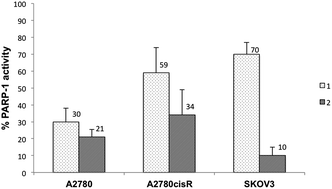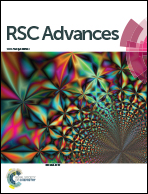Toward anticancer gold-based compounds targeting PARP-1: a new case study†
Abstract
A new gold(III) complex bearing a 2-((2,2′-bipyridin)-5-yl)-1H-benzimidazol-4-carboxamide ligand has been synthesized and characterized for its biological properties in vitro. In addition to showing promising antiproliferative effects against human cancer cells, the compound potently and selectively inhibits the zinc finger protein PARP-1, with respect to the seleno-enzyme thioredoxin reductase. The results hold promise for the design of novel gold-based anticancer agents disrupting PARP-1 function and to be used in combination therapies.


 Please wait while we load your content...
Please wait while we load your content...